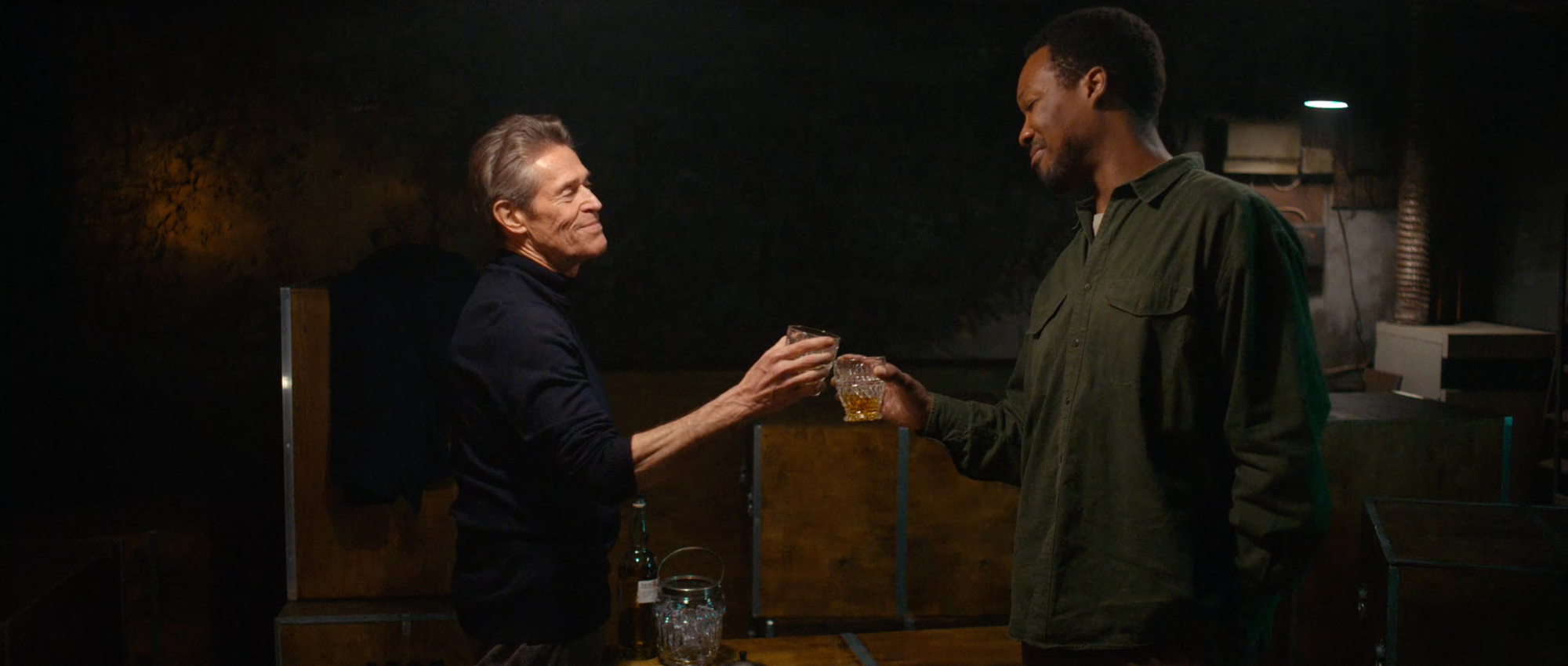"Pastels and Oil paints instead of Pencils": Nadia Latif on transitioning into cinema with "The Man in My Basement"

"The Man in my Basement" hits select theatres this Friday in the UK and US before it hits Hulu and Disney+ in the fall. You can find your closest theatre screening here.
Based on the 2004 novel by Walter Mosley, "The Man in my Basement" has been percolating in Director Nadia Latif's creative circulation since reading. Now, with a powerhouse cast and an incredibly patient visual style and pacing, the dread and confrontation of the text has been brought to life - Celeste reviewed it for us earlier this week for our TIFF50 coverage.
We got to talk to Nadia about her visually distinct references for the film, and her transition from stage to set, aided by some sage advice from theatre and cinema icon Mira Nair.
Thank you so much for talking with us, Nadia. Obviously, you are incredibly prolific in British theater. I wanted to ask you what methods or rituals came through easily from the world of Theatre, and which ones you maybe had to let go of heading into the cinematic form?
Yeah, I think I met Mira Nair about 10 years ago, and I asked her about it - she was a theatre director, and she became a film director, and I asked her the same question, "What do you need to leave behind? What do you need to learn?". She said, "Always remember, it's just actors and writers - and you know how to do that".
It is, it's just moving actors around a space to tell a story. Obviously in the theater, you try to make that as democratic as possible by making sure the cheap seats are getting the same view as the most expensive seats. But in film, it's in many ways more complicated, because you can choose where to put the camera.
I think that I always, always put the performance first. In both theater and film, I've made some high concept work, but it's always performance-led, because I think that an audience connects to any story through performance. I think that there can be grand ideas, I think there can be amazing visuals, amazing music. All those things really help. But fundamentally, the connection is between a performance and an audience, whether they see themselves in the performance, or whether they're like, Wow, that guy is so incredibly foreign to me.
I think that it felt like I was the same person, but with a slightly different set of paints, if that makes sense, you know what I mean? It's the same me, but somebody's given me pastels and oil paints instead of necessarily having pencils. Also, I think it's probably not a coincidence that nearly all of the cast came from very strong Theater backgrounds because I think - no disrespect to people who work purely in Film - that theatre actors understand how much is a team sport - how to bring a kind of process to the text and a kind of rigorousness to the text, and also, the importance of physical action. Again, you know, it's an actor's work to do psychology, but fundamentally, you have to be interested in how physical action tells us about a character.
I was going to say, I felt that sense of space and patience in the way that you shot the film, because the Corey and Willem were given such space to carry the performance and the weight of a lot of the material. So I completely chime with that.

What cinematic or artistic reference points helped you craft that visual tone? Was there any specific visual references across not just cinema, but maybe also artwork, sculpture, architecture? I know people pull from a lot of places...
You know, we tried as much as possible to use the work even in our references between me and Ula Pontikos, our DP - [to reference] people from the global majority, which is something that I know that Haile Gerima, the amazing director of "Sankofa", that he really espoused, and I really took to heart when I read that, he was just like, "you cannot make work about black people unless your references are by black people".
We were watching everything from Killer of Sheep, Charles Burnett and Chameleon Street by Wendell B Harris [Jr], but also the films of Ousmane Sembène and Djibril Diop Mambéty – Med Hondo is a huge artist in my in my life. There's a parable-like quality to all those men's films, which I find really, really interesting.
We were predominantly women making this film, and it felt right to us to draw a lot from the work of women - I storyboarded the whole film myself, and badly, wow, yeah, yeah, lots of pencil drawings, [but] There were three Visual artists we drew from - we were very influenced by the paintings of Lynette Yiadom-Boakye, who I think is extraordinary because she paints all these dark figures, these black figures, purely from imagination, she doesn't have anyone sitting for her.
We referenced the photographs of Carrie Mae Weems a lot, obviously, particularly the kitchen table series, and the portraiture of Alice Neel, actually, who, an amazing painter, was based in New York.
I try not to be too literal with kind of references - I had a list of 20 films that I sent to everybody right at the beginning, when we started working together, and it was less "these are the things I'm thinking about making this film", but [more] "these are me, and these are all of the things that have contributed into this film in some way".
They were everything from "Onibaba" on the one side to "You will die at 20" - it was that broad. It was all about understanding my point of view, [..] Let's get to know each other creatively. I was also listening to mainly the music written by our composer, Robert Aiki Aubrey Lowe, but I was also listening to a lot of Young Fathers, and always do. They're my favourite band - there's a dissonance in their music that I think is very relevant to the film.
Beautiful - thank you Nadia!
"The Man in my Basement" hits select theatres this Friday in the UK and US before it hits Hulu and Disney+ in the fall. You can find your closest theatre screening here.



